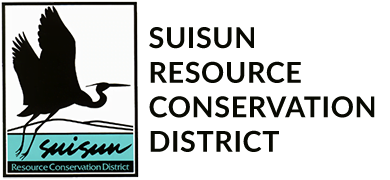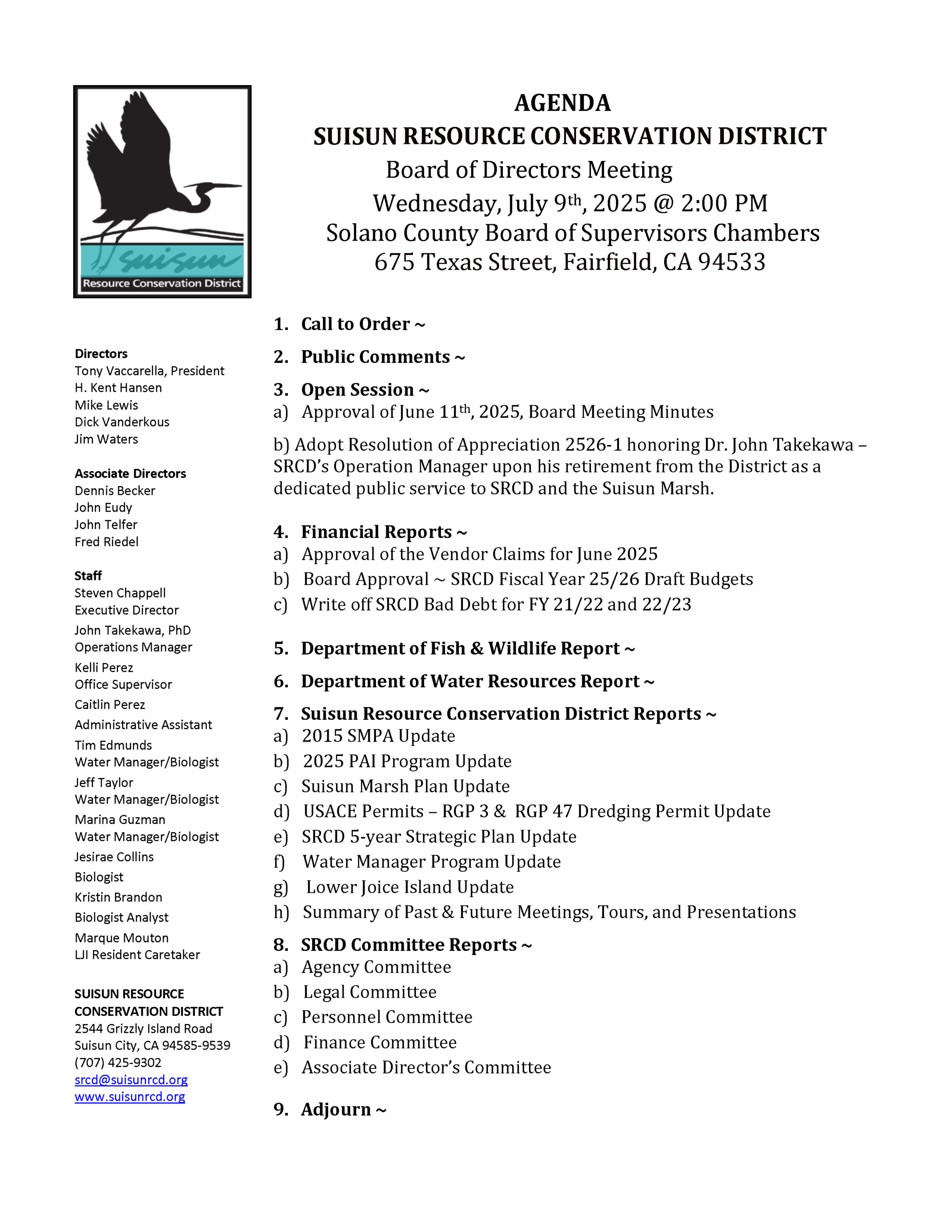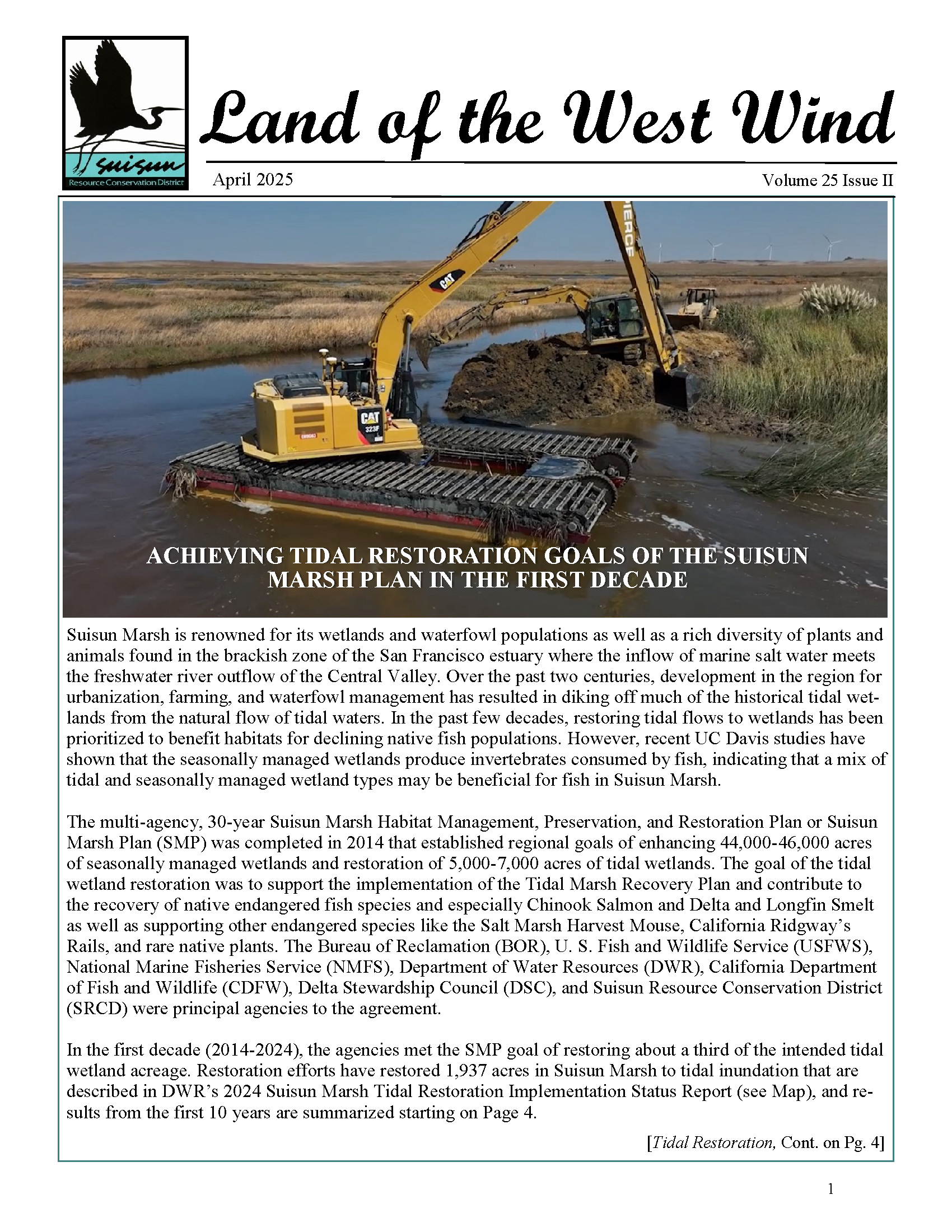A “Blue Carbon” Approach to Managing Brackish Wetlands
Carbon dioxide (CO2) is a naturally occurring gas generated by human and animal respiration. CO2 is a vital greenhouse gas that helps trap heat in the atmosphere and is used by plants in photosynthesis. CO2 is essential for the survival of life on Earth. However, human influence, mainly the burning of fossil fuels, has raised the level of CO2 in Earth’s atmosphere consistently for more than 100 years. While CO2 has a low Global Warming Potential (GWP), compared to other greenhouse gases, it accounts for about 80% of greenhouse gases in the air and can remain in the atmosphere for centuries (EPA.gov). This drastic increase in atmospheric CO2 molecules has warmed the climate at a rate that is unprecedented.
hat is Blue Carbon?
Blue carbon is the term used for atmospheric carbon that is captured and stored by the world’s ocean and coastal ecosystems. Coastal wetlands, like mangroves, tidal marshes, and seagrass habitats, provide a natural way of reducing the impact of atmospheric CO2 concentrations that contribute to climate change, through sequestration (or taking in) of this carbon via photosynthesis (Figure 1; Howard et al. 2017).
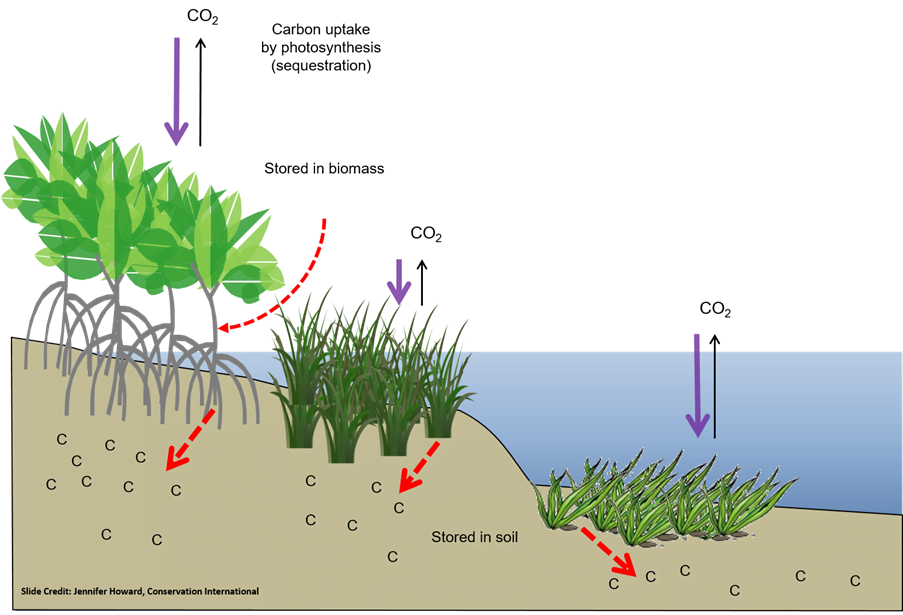
Figure 1. In intact coastal wetlands (from left to right: mangroves, tidal marshes, and seagrasses), carbon is taken up via photosynthesis (purple arrows) where it gets sequestered long term into woody biomass and soil (red dashed arrows) or respired (black arrows).
Blue carbon ecosystems capture atmospheric carbon and store it in the ground at rates up to 10 times greater than forest on a per area basis (Figure 2; Mcleod et al. 2011).
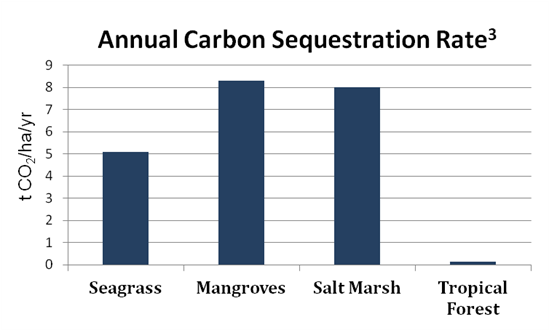
Figure 2. Wetland plants regularly remove CO2 from the atmosphere and sequester it in the form of soil carbon, where it can remain for centuries. Average carbon sequestration rates for wetland ecosystems are several times greater than for terrestrial forests.
Blue Carbon Benefits for Suisun Marsh Landowners
In the face of climate change, businesses are making bold net-zero commitments and driving rapid growth of the carbon credit market. Businesses achieve net-zero greenhouse gas emissions by reducing emissions or by purchasing carbon credits equal to their emissions. Each carbon credit represents the removal (or avoided emissions) of one metric ton of carbon dioxide from the atmosphere. Blue carbon presents an opportunity for landowners to generate carbon credits by participating in wetland projects that have a climate benefit (increase sequestration and/or reduce emissions) (Figure 3; NOAA). These projects, known as carbon offsets, result in the generation of a carbon credit which companies can trade or sell to mitigate their carbon footprint (Estuaries.org). Can Suisun Marsh landowners use moist soil management practices to mitigate climate change while maintaining their substantial fish and wildlife habitat values and biodiversity?
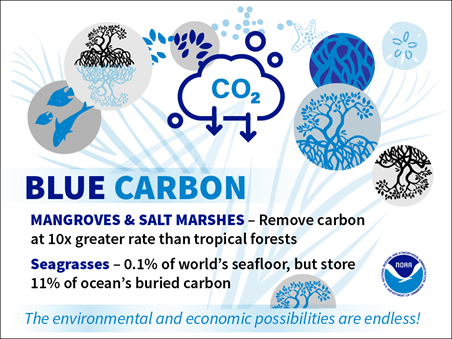
Figure 3. Blue carbon is the newly recognized ecosystem service value of climate mitigation that can provide incentives to prioritize the restoration and conservation of these coastal ecosystems.
Can we manage working wetlands to increase climate benefit?
A new study led by USGS scientists and California Waterfowl Association in collaboration with SRCD will test the best management practices (BMPs) for sequestering carbon in seasonally managed, semi-permanent, and tidal wetlands in Suisun Marsh. If carbon sequestration in Suisun Marsh is similar to the SF Bay tidal salt marshes (Callaway et al. 2012), the region has the potential to sequester 18,000 metric tons of carbon per year, but the impact of specific hydrological management practices and their climate mitigation potential in the brackish wetland environment remains unstudied. During this 3-year study (2022-2024), we will identify, develop, and test management practices that optimize carbon sequestration while achieving wildlife habitat objectives to inform how management impacts the carbon balance of wetlands. We are in the early stages of understanding the role brackish wetlands can play in climate change mitigation including which management practices may maximize carbon sequestration. This study will assess the effectiveness of different BMPs and suggest an approach to maximize carbon sequestration in brackish wetland management.
References:
Callaway, J. C., E. L. Borgnis, R. E. Turner, and C. S. Milan. 2012. Carbon Sequestration and Sediment Accretion in San Francisco Bay Tidal Wetlands. Estuaries and Coasts 35:1163–1181.
https://www.epa.gov/ghgemissions/overview-greenhouse-gases#carbon-dioxide
https://estuaries.org/bluecarbon/carbon-markets-and-standards/
Howard, J., Sutton-Grier, A., Herr, D., Kleypas, J., Landis, E., Mcleod, E., Pidgeon, E. and Simpson, S. 2017. Clarifying the role of coastal and marine systems in climate mitigation. Front. Ecol Environ. 15(1): 42-50. 10.1002/fee.1451
Mcleod, E., Chmura, G.L., Bouillon, S., Salm., Bjork, M., Duarte, C.M., Lovelock, C.E., Schlesinger, W.H., and Silliman, B.R. 2011. A blueprint for blue carbon: Toward an improved understanding of the role of vegetated coastal habitats in sequestering CO2. Front Ecol Environ. 9. 10.1890/110004.
Learn more about the The Blue Caron Initiative
